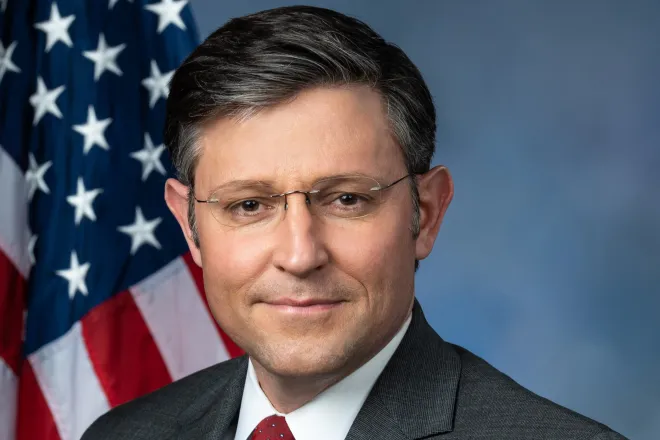
ICE detention center could bring jobs, controversy to Walsenburg
Two months after it became public that Walsenburg could soon host a detention center for U.S. Immigration and Customs Enforcement, there has been more speculation and debate over the issue than actual answers from the federal agency.
“I suspect we will be one of the last to hear anything. Most likely, the media will be presented with an announcement from (private prison company) CoreCivic as to the opening long before we will be,” Karl Sporleder, a Huerfano County Commissioner whose district includes the site, wrote in an email.
Walsenburg, a town of about 4,600 about 50 miles south of Pueblo, first landed in the conversation around expanded immigration detention capacity in July, when the American Civil Liberties Union and ACLU of Colorado posted a list of potential sites they obtained through a Freedom of Information Act lawsuit. It included the Huerfano County Correctional Center along with a handful of other Colorado locations.

© Akarawut Lohacharoenvanich - iStock-1436012592
CoreCivic, which owns the 752-bed site, then listed job openings for detention officers in Walsenburg “contingent on contract award,” the Colorado Sun reported in July.
The facility also showed up on an internal ICE planning document from July obtained by The Washington Post, along with new detention sites in Hudson and Ignacio and an expansion of the existing Aurora facility.
The correctional center was operational until 2010 and housed inmates from Arizona as the Colorado Department of Corrections moved away from using private prisons. If it reopened under an ICE contract, it would be part of an ongoing effort to expand detention and deportation efforts under the Trump administration. Those plans are bolstered by $45 billion in the Republican federal spending and tax cut law approved over the summer.
City and county leaders say they have no control over whether CoreCivic enters into a contract with ICE.
“The city doesn’t have a say in this,” said Walsenburg Interim City Administrator John Galusha. “The prison is permitted and has every right to open, as far as we’re concerned.”
Galusha said a CoreCivic representative called him in early September to establish communication, but did not have any information about when or if the site could open.
“There’s been discussion about opening the Walsenburg facility and it’s been around all over, including ICE internal memos, but there’s no commitment one way or another yet,” he said.
At the same time, businesses that operate in southern Colorado are preparing for the possibility. In a Sept. 4 email obtained by Colorado Newsline, the aviation director of the Pueblo Memorial Airport sought to connect Freeman Jet Center, an aviation services company, with CoreCivic leadership.

© danielfela - iStock-507873830
“They manage multiple jet centers across the US and service the ICE deportation flights in other communities,” Greg Pedroza wrote to Walsenburg city administration. “I am hoping you may have a contact with the detention center in Walsenburg who can speak to Freeman Jet Center management to propose Pueblo Airport to provide service to these flights, if needed.”
Pedroza did not return a request for comment.
A city administrator forwarded his email to Andrea Evans, a senior director at CoreCivic, who responded that she would send the information to her team. Freeman Jet Center did not respond to a request for comment or information about where they currently service immigration flights.
In a statement, CoreCivic spokesperson Ryan Gustin said that the company plays a “limited and important role” in the American immigration system and works within ICE’s established procurement process.
“We know this is a highly charged, emotional issue for many people, but the fact is the services we provide help the government solve problems in ways it could not do alone — to help create safer communities by assisting with the current immigration challenges, dramatically improve the standard of care for vulnerable people, and meet other critical needs efficiently and innovatively,” Gustin said. “These are problems the American public has made clear they want fixed.”
‘Not our dream situation’
The opening of the facility is a massive unknown, but many leaders would be supportive and welcoming of it, said Carlton Croft, the executive director of Huerfano County Economic Development. It would bring jobs, sales tax revenue and create a major utility customer.
“We need something to bring in younger families, and that’s jobs and economic growth,” he said. “This is not our dream situation, but we need the economic driver that something like this facility could bring.”
“It’s just hard in rural Colorado to attract the jobs, and if we don’t have jobs, these communities can slowly die and blow away,” Croft added.
Huerfano County has a median household income of about $52,000 and an employment rate of about 37%, according to recent census data. Colorado’s employment rate sits at about 65%.
Croft said he would love major manufacturers or data centers to set up in the county — he highlighted cosmetic manufacturer Chaé Organics as an example of Huerfano County success — but energy and infrastructure needs can be massive barriers. It also takes years and a large amount of capital investment to build those sites. The mothballed detention facility already exists, and has the right permits.
But others aren’t so sure about the sustainability of an ICE detention center as an economic driver in the county.
“It’s true there will be some significant revenues, but it will be short-term,” said Brian Lalander, who was the town’s mayor in 2020 and 2021 and now sits on the Historic Preservation Commission. “Let’s be realistic — these kinds of facilities are financed based on political ideology. This is not going to be the solution to Walsenburg’s economic problems.
There is also the question of whether an operational detention center would draw its workforce from the county itself or attract commuters from Pueblo, Trinidad and other surrounding cities. Huerfano County has an aging population and a median age of 55 years old, and there’s not a lot of housing, especially rental properties.
“We’re very lucky that we have a nice hospital, but they’ve got most of the professional staff coming in from Colorado Springs and from Pueblo,” Croft said. “Very few actually live in our county, and we’ve got to figure out a way to make that possible.”
If the correctional facility opens up as an ICE detention center, it could need a few hundred employees, but those workers might not meaningfully contribute to Walsenburg’s economy if they live, shop and dine elsewhere.
“They’ll get an extra soft drink on their way home from Loves, but it won’t have this great effect,” Lalander said.
Still, Croft said he has picked up calls from hotels, restaurants and retail stores since the news of a possible ICE facility broke. Those would not be economic powerhouses, he said, but they would bring in a modest amount of jobs. Galusha said he remembered at least three more restaurants in town when the detention center was open.
A group of protestors have demonstrated in Walsenburg against the Trump administration every Friday since mid-February, and their attention is now largely focused on the detention center. Dee Maes-Sandoval is one of the few dozen who show up regularly. The Walsenburg native now lives in Colorado Springs and said she sees a level of apathy from Walsenburg residents on the issue.
“We’re kidnapping people because of the color of their skin,” she said, referencing immigration enforcement operations. “Read books about the Holocaust and what happened. We’re in the beginning stages, and people turned a blind eye because they didn’t want to get involved.”
Maes-Sandoval said she does not believe a detention center would be an economic boom to Walsenburg, since the workforce would likely come from outside the city. She sees hope in a lawsuit over a planned ICE facility at a CoreCivic property in Leavenworth, Kansas, where the city tried to block the prison’s reopening as an immigration detention center over permitting ordinances. A judge ruled in favor of the city and issued a temporary restraining order in June.
“The (city) ordinances presented a problem for that, and that’s what we’re hoping for in this case,” Maes-Sandoval said. “We’re hoping we can find something to stop it.”
That would require money and political willpower from the city or county. Maes-Sandoval acknowledges that CoreCivic is acting as if everything will move forward, and she won’t be surprised if it reopens. She drives to the facility when she can, and has noted the new barbed wire around the perimeter. If it does reopen, she said she will continue her activism.
“It’ll just mean that we will be out there more,” she said. “We will be out there, protesting at the site and seeing what we can do to help the people who will be detained there.”

















